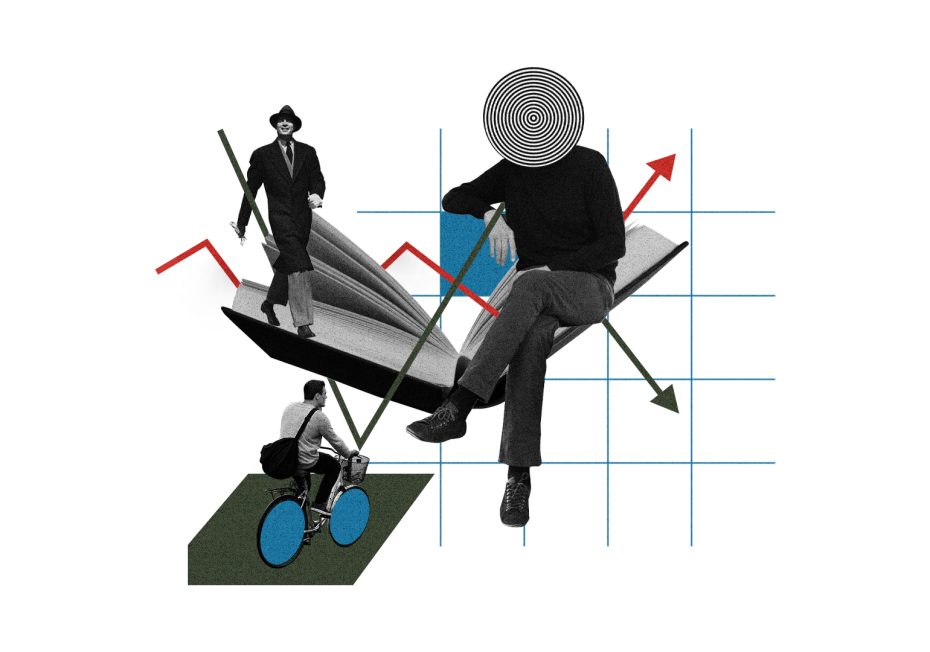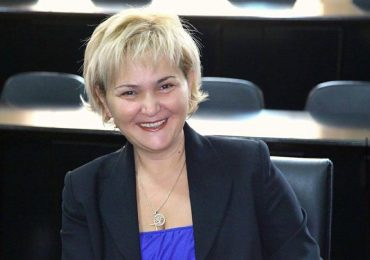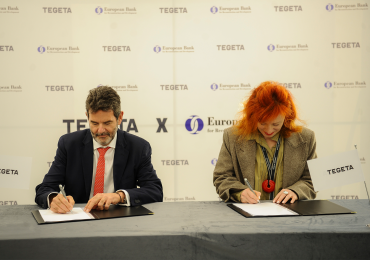Introduction
Contrary to popular belief, economics is not an exact science and it is not value-free. Therefore there exist not one, but many schools of economics that have many ways of approaching economics. There are at least nine different schools of economics: Classical, Neoclassical (that is the dominant one), Keynesian, Marxist and so on. Each school has its own strengths and weaknesses and the boundaries between schools are actually obscure (Chang, 2014). None of them is completely right or wrong, and the choice between them depends on the context.
Nowadays, mainstream economics is associated with only one school of economic thought called neoclassical economics. This school essentially sees the individual as perfectly selfish and rational, able to create perfect markets and act in his/her own interests. In Georgia, as well as globally, economics education is increasingly based on these assumptions from neoclassical economics.
Several studies (Earle et al., 2017; Mazzucato & Jacobs, 2016; Skidelsky, 2020) point to a worrying lack of pluralism in education and the necessity for a more pluralist approach to teaching. The pluralist approach to economics focuses on these diverse ways of ‘doing economics’, using different schools of economics, sometimes at the same time. It emphasizes various approaches to understanding the economy and its interaction with the wider social and environmental systems in an interactive, reflective and engaging manner.
One reason for adopting a pluralistic approach is the fact that economics does involve value judgment. As human beings have free will, they make decisions in the light of their own ethical, political or moral values. In light of these values, some theories can be ‘more correct’ or ‘more wrong’. Also, becoming aware of different types of economic arguments is of utmost importance for encouraging critical and comparative thought among students. Marginalizing alternative perspectives means that students miss out on some pertinent debates in economics that really make the basis of the field. For example, neoclassical economics argues that the economy is made up of individuals, whereas institutional economics takes institutions too as units of analysis, assuming that people are influenced by their social context. The student knowing a broad range of theories develops the capacity to critically judge which of these economic arguments makes the most sense in the current context.
How we teach economics means how we do economics. And how we do economics has played a large part in where we are at right now. In the last 30 years, economics education has adhered to neoclassical economic policies, providing the intellectual backing for neo-liberalism – the dominant public policy paradigm of our times. It is worth noting that, in 2021, Georgia ranked first among Eastern Partnership countries with the highest inequality with a Gini Index of 36.4 and with 3.8% of the population in Georgia being stricken with multidimensional poverty. For the sake of the change, the current content and approach to teaching economics should be reconsidered towards a more flexible and multi-faceted theoretical approach to economics.
Actually, the need for pluralism in economics has been around the headlines for a long time and has gained significant prominence following the Great Financial Crisis of 2008. Many economists (Kaletsky, 2009; Krugman, 2009; Roubini, 2009; Stiglitz, 2009) have cast doubt on the assumptions of the rationality of economic agents and the efficient market hypothesis. The credibility of searching for solutions in neoclassical economics was also severely shattered.
In this context, the discontent towards the current economics curricula, which are mainly dominated by Neoclassical Economics, has intensified. Students around the world set up and joined student societies like Rethinking Economics, Post-Crash Economics (the University of Manchester) and the Cambridge Society for Economic Pluralism, calling for a more interdisciplinary approach and pluralistic as well as critical economics. They assert that the dominant school – that is Neoclassical Economics – failed to predict the financial crisis and even diagnose the underlying causes afterwards. Therefore in addition to neoclassical economics, a variety of heterodox (that is schools of economic thoughts other than neoclassical one) should be taught and cross-fertilized. The sentiment was so strong that the Harvard students walked out of N. Gregory Mankiw’s introductory economics class in 2011, expressing discontent with “the bias inherent in this introductory economics course”. As a matter of fact, teaching of undergraduate economics in Georgia is almost entirely based on Mankiw’s textbooks.
One of the most influential academic economists of the 20th century, Paul Samuelson said “I don’t care who writes a nation’s laws, or crafts its advanced treatises, if I can write its economics textbooks.” The great impact of the paradigm which creates an understanding of economic phenomena should stir debate around the teaching of economics also in Georgia.
Methods & Results
Inspired by protest at the one-eyed presentation of economics, I decided to review undergraduate programs in economics. To anticipate the results, economics education in Georgia is solely based on neoclassical economics. Other schools of thought such as Austrian, Institutional, Developmental, Keynesian, and Marxist are largely absent.
The chosen sample includes both public and private universities in Georgia. The aim is to investigate the design and structure of curricula for bachelor’s degrees in economics in order to determine the plurality on the basis of diversity and interdisciplinary attitude. The method used is partly based on the approach adopted by Rethinking Economics India. Diversity is defined as the variety of the content, authors, and schools of thought presented in the programs. An interdisciplinary attitude is rather seen as allowing students to study subjects from multiple fields. The main emphasis is put on the courses of Microeconomics and Macroeconomics, as these modules are the backbone of an undergraduate economics degree and are taught across six semesters. In addition to that, an alternative approach as theorized by PEPS-Economie French Students’ Association, according to which the course content of Economics Bachelor degrees is examined to investigate which subjects are marginalized or dominant.
In some cases, Principles of Microeconomics and Principles of Microeconomics, or Introduction to Economics are offered as preparatory courses. The teaching of principles of economics is fundamentally neoclassical. This is evident in the fact that teaching is based on Mankiw’s Principles of Economics as well as Macroeconomics and Microeconomics as either compulsory or additional reading. There is an increasing number of literature (Bofinger, 2021; Campbell et al., 2019) that criticizes Mankiw’s “Ten Principles of Economics” on the basis of largely ignoring crucial complexities of the economic world. It omits important topics such as inequality, development, and power imbalances. This, in turn, reflects inadequate interaction with the issues so important to Georgia and leaves Georgian students less aware of the world in which they are growing up and less prepared to overcome challenges as professional economists. Providing introductory courses to economics solely based on Mankiw’s textbooks creates the fallacious impression that these principles are ‘universal truths’.
These and other textbooks used do not mention what school of thought is being taught, or that there are any other schools of thought. In the course of microeconomics curricula, the definition of economics has been based on a study of a rational choice theory which is how people make choices that will provide them with the greatest benefit based on their self-interests. Defining economics by its analytical methodology and theoretical approach and not its subject matter cements the fallacious view that there is only one right way to do economics and subsequently discourages pluralism in education. As a matter of fact, the pluralistic approach to economics seeks to define economics by the object of inquiry – that is the economy which in turn consists of the issues of production, distribution and exchange.
The introductory and intermediate microeconomics courses start by offering comprehensive mathematics teaching and presenting a constrained optimization model. Core topics covered are consumer and producer theories which are combined into an equilibrium model.
The macroeconomics curriculum in selected universities focuses on models of the neoclassical-Keynesian synthesis. The teaching of short-term macroeconomics includes geometric diagrams to represent the economy which is the most famous IS-LM model. The long-term growth models are mostly based on a Solow Growth Model. As in most cases, the divide between the short run and long term is rather common. Other ubiquitous topics are the AD-AS model, the Phillips curve and rational expectations. In terms of course results, a greater emphasis is put on understanding macroeconomic stabilization policies.
The relevant issues to the economy of Georgia, such as reducing unemployment, improving living standards, eradicating poverty, and developing the industrial sector are scarce in curricula. Some universities offer a single course specializing in the Georgian economy in their programs, which accounts for 2% of all classes.
The examination focuses on course titles to understand the economic education received by Georgian economics undergraduates. Unsurprisingly, mathematics and statistics take up the largest part of the undergraduate economics curricula. All seven universities introduce various mathematics and/or calculus as mandatory courses in the first year, whereas a single economic history course is barely offered in economic classes. The share of mathematics, statistics, econometrics and data analysis in economics degree programs is never lower by 20% across chosen universities. In addition to the excessive formalism of micro and macro courses, it can be deduced that mathematics has been an over-dominant player in modern economics education.
However, the mathematic approach to economic courses is not an issue peculiar only to Georgia; there has been a tendency of that over the past several decades, broadly in line with the surge of the dominant neoclassical approach. An application of mathematics, while being an excellent tool to test propositions about how the economy works, should go hand-in-hand with historical analysis. Following the 2008 crisis, Paul Krugman in his seminal article ‘how did economics get so wrong’ in New York Times wrote that ‘the economics profession went astray because economists, as a group, mistook beauty, clad in impressive-looking mathematics, for truth.’ It should be noted since 2006, the course of economic history has been removed from higher education programs in economics.
The weighted average of reflexive courses (Economic History, History of Economic Thought, Economic Doctrines), allowing a reflection on economics and its methods and assumptions, accounts for 3.5%. Indeed, Economic History is offered in 3 universities out of 7. The course of economic doctrines is offered as an either elective or mandatory course in 2 universities out of 7. An important issue emerging from this result is the increasing alienation of economic studies from real-world applications. Teaching very little history makes the economic theory seem abstract and contextualizing the recent state of the global economy as well as relating it to past events becomes impossible. Professor Skidelsky puts out: “Behind the dismissal of economic history and the history of ideas lies the mistaken view of economics as a natural science, whose knowledge base automatically cumulates.” Not only does economic history provide facts on which economics rely their hypotheses, but it also convinces students that the theory they are learning is useful in understanding the real world. With this thought-provoking course, identifying a long-run perspective on economic conditions becomes feasible for the students.
As opposed to reflexive courses, there is much more emphasis on interdisciplinary courses. Almost all of the chosen universities offer either introduction or core courses such as sociology, philosophy, political science and psychology. In order to achieve pluralism in economic teaching, it is vital to have an interdisciplinary approach to economic concerns. A research paper by Karla Hoff and Joseph Stiglitz suggests that insights from other social sciences can in fact enrich economic modelling and standard economic discourse.
Conclusion
The top issues of the Georgian economy, such as informality, rising inequality, structural transformation, and de-industrialization are absent in the curricula. Therefore, some reorientation towards other economic theories is desirable to make economics more reflective of Georgian society and our needs. This is why I believe that, in the face of a multi-faceted global or regional crisis, a pluralist approach to economics is crucial for the formation of intellectual professionals. By placing pluralism, diversity, and constructive criticism at the core of economics education, the students would be able to carefully evaluate and investigate which theory provides a better understanding of economic phenomena. By encouraging diverse thinking, students are more capable of self-development; In this way, the students generate new ideas and acquire skills to create new strategies because no single economic paradigm is sufficient to tackle all the challenges.
Bibliography:
Bofinger, P. (2021). Best of Mankiw: Errors and Tangles in the World’s Best-Selling Economics Textbooks. Institute for New Economic Thinking.
Campbell, A., Davis, A., Fields, D., Quick, P., & Schneider, G. (2019). The Unreal Basis of Neoclassical Economics. American Review of Political Economy.
Chang, H.-J. (2014). The User’s Guide. Pelican.
Earle, J., Moran, C., & Ward-Perkins, Z. (2017). The Econocracy: The perils of leaving economics to the experts. Manchester University Press.
Kaletsky, A. (2009). The Failure of Neoclassical Economics. Prospect.
Krugman, P. (2009, September 2). How Did Economists Get It So Wrong? Retrieved from New York Times: https://www.nytimes.com/2009/09/06/magazine/06Economic-t.html
Lekashvili, E. (2018). Challenges of Teaching the Economic Sciences in Georgian Universities. Globalization and Business.
Mazzucato, M., & Jacobs, M. (2016). Rethinking Capitalism: An Introduction. In Rethinking Capitalism: Economics and Policy for Sustainable and Inclusive Growth (pp. 1-28). Wiley-Blackwell.
Muijnck, S. d., & Tieleman, J. (2021). Economy Studies: A Guide to Rethinking Economics Education. Amsterdam University Press.
PMCG Research. (2021). Poverty in Georgia (2010-2020). PMCG.
Rethinking Economics India Network. (2022). Pluralism in economics education: A review of undergraduate programmes in India.
Roubini, N. (2009, February 19). Laissez-Faire Capitalism Has Failed. Retrieved from Forbes: https://www.forbes.com/2009/02/18/depression-financial-crisis-capitalism-opinions-columnists_recession_stimulus.html?sh=13c86cd622ef
Skidelsky, R. (2020). What’s Wrong with Economics? Yale University Press.
Stiglitz, J. E. (2009). Interpreting the Causes of the Great Recession of 2008. United States: Financial Crisis Inquiry Commission (FCIC). Retrieved from https://fcic-static.law.stanford.edu/cdn_media/fcic-testimony/2009-1020-Stiglitz-article-2.pdf
The Members of the PEPS-Economie Students’ Association. (2014). The case for pluralism: what French undergraduate economics teaching is all about and how it can be improved. Int. J. Pluralism and Economics Education, 385-400.










